Physical Address
304 North Cardinal St.
Dorchester Center, MA 02124
Traumas that would likely produce fractures in adults often do not in children due to intrinsic anatomical factors.
In addition to the unique anatomy of the pediatric patient, future growth and development must be accounted for when addressing these injuries.
In deciding between operative and nonoperative management of pediatric facial fractures, the practitioner is essentially weighing the risk of growth disturbance against the benefit of precise reduction and rigid fixation.
When indicated, employing less invasive approaches to operative management should be practiced.
As for adults, the general goals of treatment of pediatric facial trauma include restoration of the premorbid anatomy and stable bony anatomy. However, the need to minimize future growth disturbance and the difference in the bony architecture in question require a different treatment approach. The phrase “children are not just small adults” is germane to facial fractures, but the reality is that there is wide variation in craniofacial anatomy, growth potential, function, and social behaviors even within the pediatric population. A 3-year-old toddler is different than a 10-year-old child, and both are different than a 17-year-old adolescent. As such, the pediatric plastic surgeon cannot apply a single approach to facial fractures but rather must understand the age-specific treatment needs.
Intrinsic anatomic differences of the craniofacial skeleton lead to unique fracture patterns and complications that are not observed in adult facial trauma. Future growth and development must be accounted for when considering treatment options, and long-term follow-up is mandatory to ensure adequate outcomes and inform future practice. In this chapter, we review craniofacial anatomy and growth, describe the presentation and assessment of facial trauma, and provide evidence-based guidelines for trauma management with a focus on factors that make pediatric facial fractures a unique entity.
Amongst the numerous authors that have catalogued and analyzed their experience with pediatric facial fractures there is consensus that these account for less than 15% of all facial fractures. Frequency increases with age, prevalence is greater in males (2–3:1), and severity of injury also worsens with advancing age and male sex. Motor vehicle collision (MVC), assault, and falls are the most common cause of facial fracture. Reportedly, pediatric facial fractures are more prevalent in spring and summer months, present in greater numbers between midnight and noon, and most commonly occur on Sundays and least commonly on Thursdays.
According to the authors’ research, based on data from the emergency department, the most common facial fracture in all pediatric age groups is the orbital fracture. However, there is some contention in determining the relative incidence of fracture patterns with many studies having significant selection biases: subjects enrolled or excluded according to admission status (inpatient vs. outpatient), necessity of operative management, and treating specialty. To better characterize the full spectrum of pediatric facial fractures, the authors described injury patterns, associated injuries, and outcomes in a large consecutive group of all pediatric patients with facial fractures evaluated in a major children’s hospital emergency department from fracture, regardless of operative requirements, necessity for hospital admission, or treating service. Although orbital fracture was the most common fracture type for all age groups combined (29.8% of all fractures), fracture type did vary by age at injury. Maxillary, zygomaticomaxillary complex, and nasal fractures were more common in older patients; oblique craniofacial fractures (skull fractures occurring in combination with a facial fracture) were more common in younger patients. Of mandible fractures in the authors’ series ( n = 179), condylar head and subcondylar fractures were most common (48%). Anatomical distribution varies with age; condylar fracture incidence decreases, while body and angle fractures increase. Nasal fractures are likely often underreported, with many treated in an outpatient setting or going untreated ; and, this factor may confound the authors’ epidemiological data as their study was based through the emergency department. Midface fractures are uncommon (10.4% of facial fractures in the authors’ series), likely secondary to the protection of the midface by the prominent forehead and mandible in children, in addition to the robust anatomy of this region. Zygomaticomaxillary complex (ZMC) fractures are the most common of the rare midface fractures.
The cause of injury also varied by age: violence, assault, and MVC were the most common causes of injury in 12- to 18-year-olds, while activities of daily living caused the most fractures in 0- to 5-year-olds. Fifty percent of injuries in abused children involve the head or neck, and facial fractures are seen in 2.3% of abused children. Craniofacial injury is the second most common sport-related injury and is involved in up to 20% of all pediatric sport-related injuries in the United States with 10.6% of craniofacial injuries being sports related. In the context of MVC, unrestrained children were significantly more likely to sustain facial fractures: 65%–70% of children involved in all-terrain vehicle or bicycle accidents were not wearing helmets.
The authors have also examined the epidemiologic data of pediatric craniofacial fractures secondary to violence, comparing these data to craniofacial fractures sustained from all other causes. Patients with violence-related fractures were more likely to be older, male, non-White, and live in a socioeconomically depressed area. A greater number of patients with violence-related injuries sustained nasal and mandible angle fractures, whereas more patients with non-violence-related injuries sustained skull and orbital fractures.
Facial fractures are high-energy injuries, and as such are heavily associated with other injuries. Facial fractures and a depressed Glasgow Coma Score (GCS) show a strong correlation with intracranial hemorrhage and cervical spine fracture. Evaluation for such injuries is recommended in those with facial fractures and an abnormal GCS. In the authors’ series, excluding soft-tissue injuries, brain trauma was the injury most commonly associated with facial fractures across all age groups. A total of 55% of patients with facial fractures had associated injuries: 81% of these were considered “serious” and included cardiovascular, cervical spine, or intra-abdominal trauma. Some 47% had neurological injuries (60% of these were concussions), and 3% had ophthalmologic injuries, including blindness. In all, 1.4% died as a result of their injuries. Mechanism of injury contributes to this; there were significantly more associated neurologic injuries in children who sustained a craniofacial fracture due to a non-violent mechanism – specifically, a greater number of subarachnoid bleeds, subdural bleeds, concussions, and comas. Patients in the non-violent group were also more likely to have an injury to a vital organ system; they experienced a greater number of respiratory, abdominal, and musculoskeletal injuries.
Nearly one-third of pediatric patients with facial fractures in the authors’ retrospective series were diagnosed with a concomitant concussion. These data suggest that a higher index of suspicion for concussion should be maintained for patients with skull fractures and potentially orbital and maxillary fractures. Given the possibility of a worse outcome with delayed concussion diagnosis, patients with facial fractures may benefit from more proactive early concussion screening.
Facial topography is a complex assemblage of distinct shapes and intricate contours formed by soft tissues and their connections to the underlying skeletal framework. From birth through adolescence, the facial skeleton drastically changes size, shape, and proportions. Early disruption of facial growth leads to deformity; the severity of deformity compounds over time with growth. As such, understanding the centers of craniofacial growth will guide surgical decision-making and help inform parental expectations on future growth.
There are significant regional differences in growth of the craniofacial skeleton. Cranial growth begins very rapidly and then tapers off as it is largely completed withing the early years of life. This rapid growth is spurred by the infant brain, which triples in size within the first year of life. Concomitantly, the growth of the neurocranium is rapid, being 25% complete at birth, 75% by 2 years, and 95% by 10 years of age, with growth slowing significantly after 3 years of age. The facial skeleton, on the other hand, grows more slowly and in discontinuous fashion: it is 40% complete at 3 months, 70% at 4 years, 80% by 5 years, pauses until puberty, and resumes until 17 years of age. As a result, the cranial/facial proportion of the infant head is 8:1, but this decreases to 4:1 by roughly 5 years of age and 2:1 in adulthood ( Figs. 22.1 & 22.2 ).
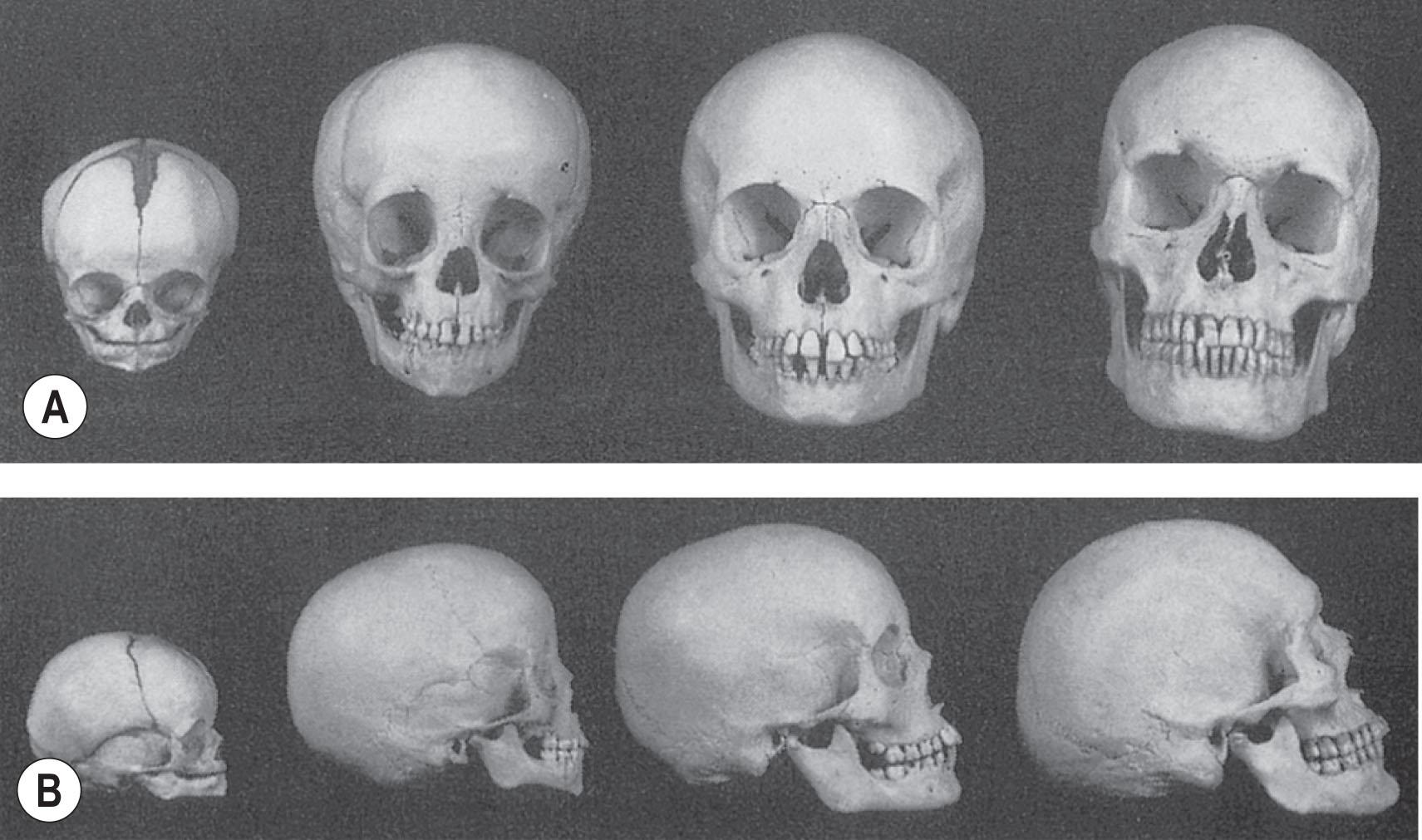
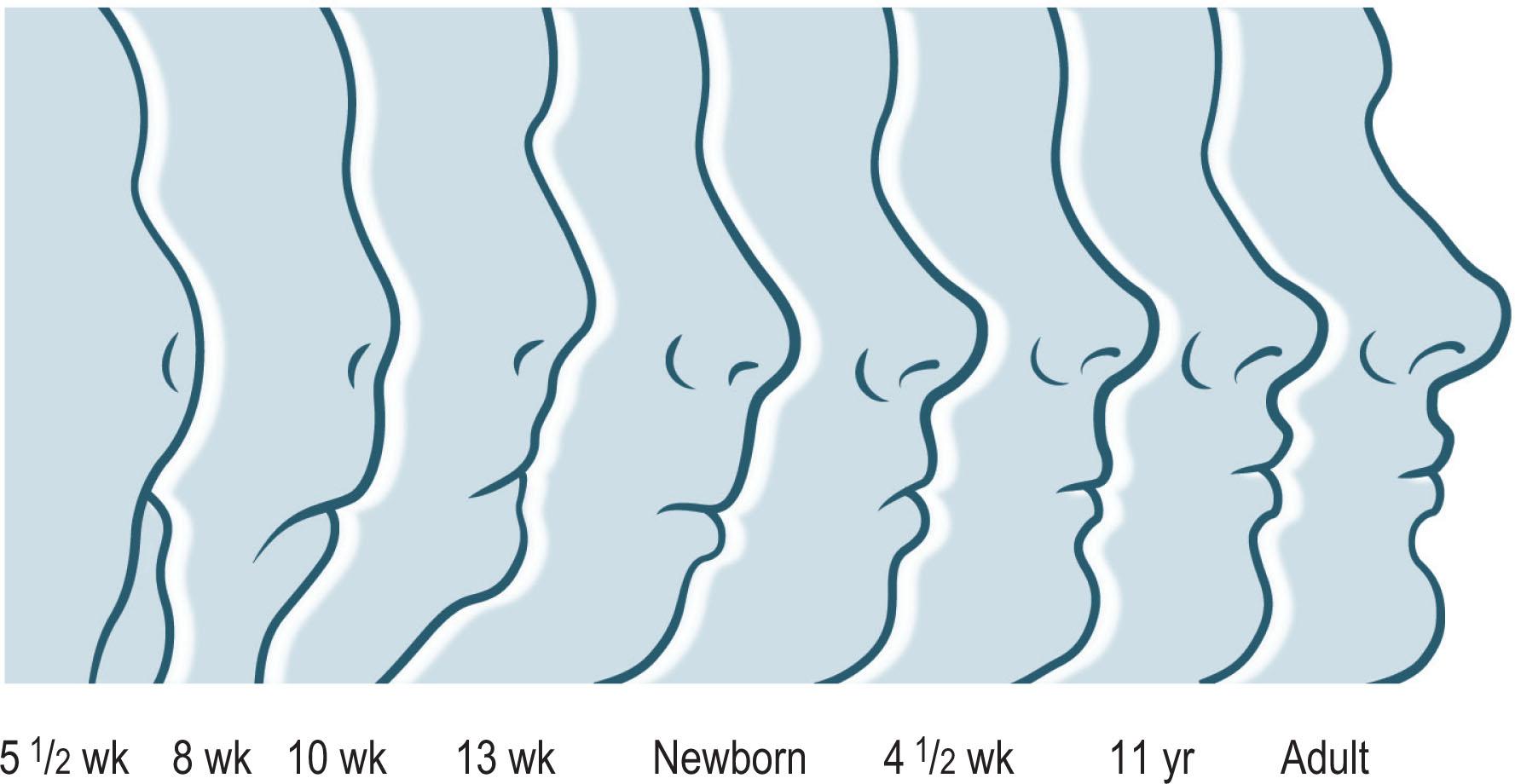
Growth signals and regional growth centers of the face are critical in determining the timeline of growth and development. The upper face grows secondary to brain and ocular development; midfacial growth follows the development of the nasal capsule and dentition. Orbital growth is complete by 6–8 years, and nasal growth is largely complete by 12–14 years. The majority of nasal growth occurs in two distinct postnatal growth spurts, ages 2–5 years and again during puberty. Additional growth after is usually complete by age 16–18 in girls and 18–20 in boys, although further growth of the nasal septum may occur up to the age of 25 years. The palate and maxilla achieve two-thirds adult size by 6 years. At birth, the mandible is formed by two bones joined by cartilage at the symphysis, ossifying within the first year of life. The majority of permanent teeth erupt by 12 years of age. The gonial angle becomes increasingly acute, the ramus and body enlarge, and the distance between the dentition and the inferior mandibular border increases. Cortical bone replaces tooth buds as the primary component of mandibular volume. The inferior alveolar nerve is displaced superiorly to rest midway from the superior and inferior mandibular borders. The mental foramen migrates to rest ultimately beneath the first or second permanent premolar.
The decreased bone mineral content of the infant skull yields increased tolerance to force without fracture; fractures that do occur are more likely to be incomplete, greenstick fractures. In addition to mineralization, sinus pneumatization and dental eruption are responsible for the evolving craniofacial load-bearing capacity and subsequent fracture patterns ( Figs. 22.3 & 22.4 ). As a result, the pediatric facial skeleton is not only less likely to sustain a fracture, but common facial fracture patterns are different from those seen in adults. The maxillary sinus is aerated at 12 years of age; the frontal sinus is not fully aerated until adulthood. Oblique craniofacial fractures precede the Le Fort patterns seen in adulthood as an incompletely pneumatized frontal sinus transmits energy directly from the site of impact to the supraorbital foramen and then to the orbit and zygoma. In one large study, Le Fort fractures were only seen in patients more than 10 years of age. Forehead fractures in children may develop into growing skull fractures (documented in 0.6%–2% of pediatric skull fractures). These lesions develop secondary to brain pulsations transmitting through occult dural disruptions and driving a growing bony diastasis, resulting in a leptomeningeal cyst or “hernia”. Another consequence of the underdeveloped frontal sinus is an increased incidence of isolated orbital roof “blow-in” fractures. Blindness also occurs with increased frequency due to the direct transmission of force to the orbit. Trapdoor fractures are more common secondary to greater bony elasticity. Children tend to have fractures without enophthalmos or vertical orbital dystopia (VOD), likely secondary to more robust supporting structures existing in this population. Enophthalmos and VOD require composite injury to bone, ligaments, and periosteum allowing for an increase in intraorbital volume ( Fig. 22.5 ).
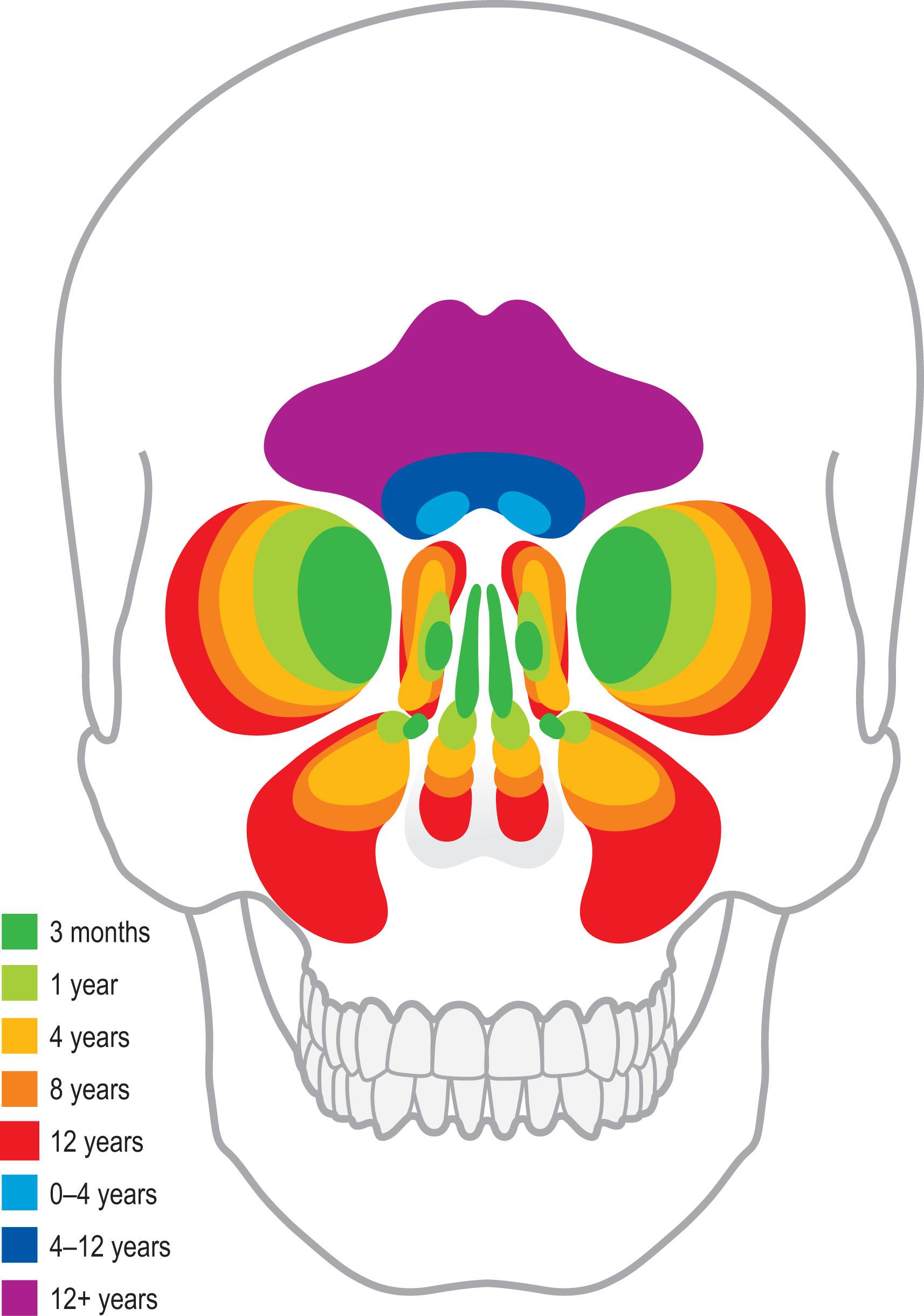
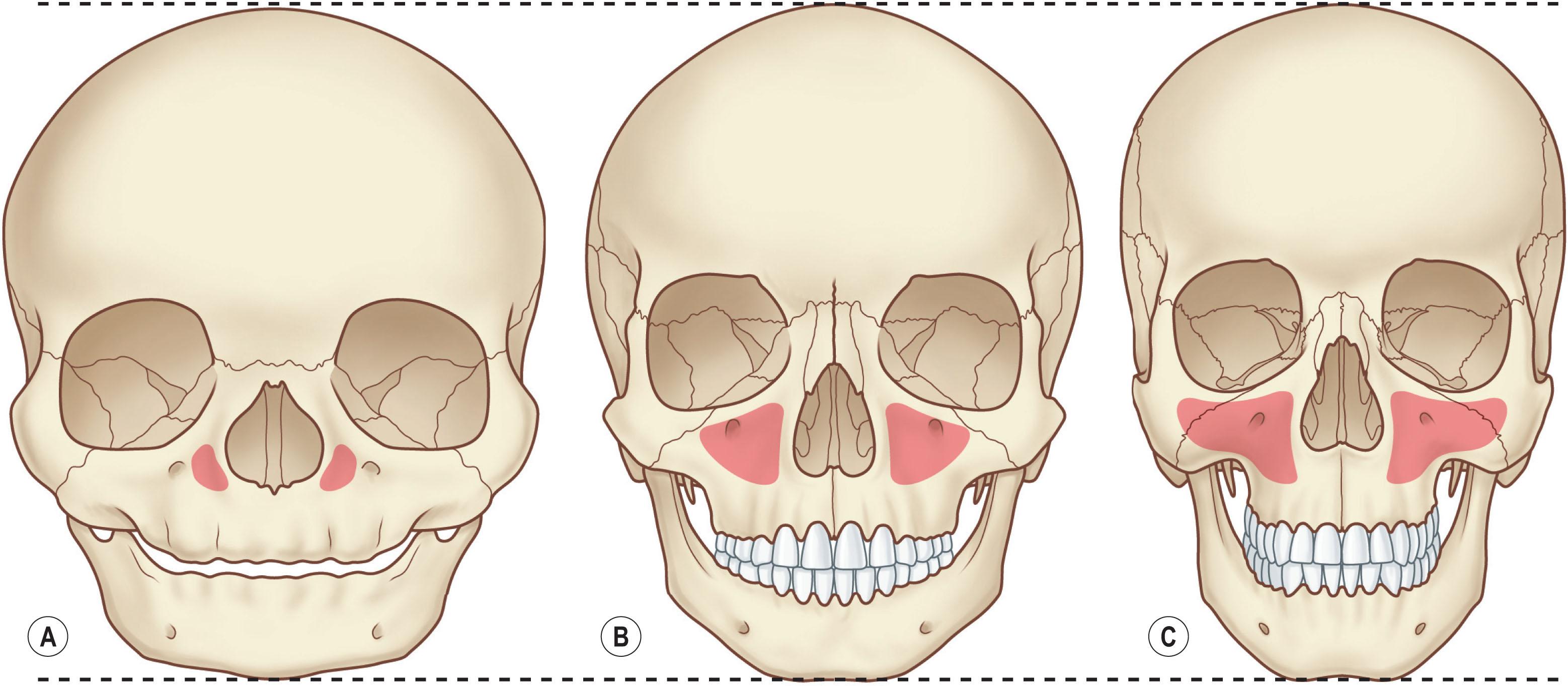
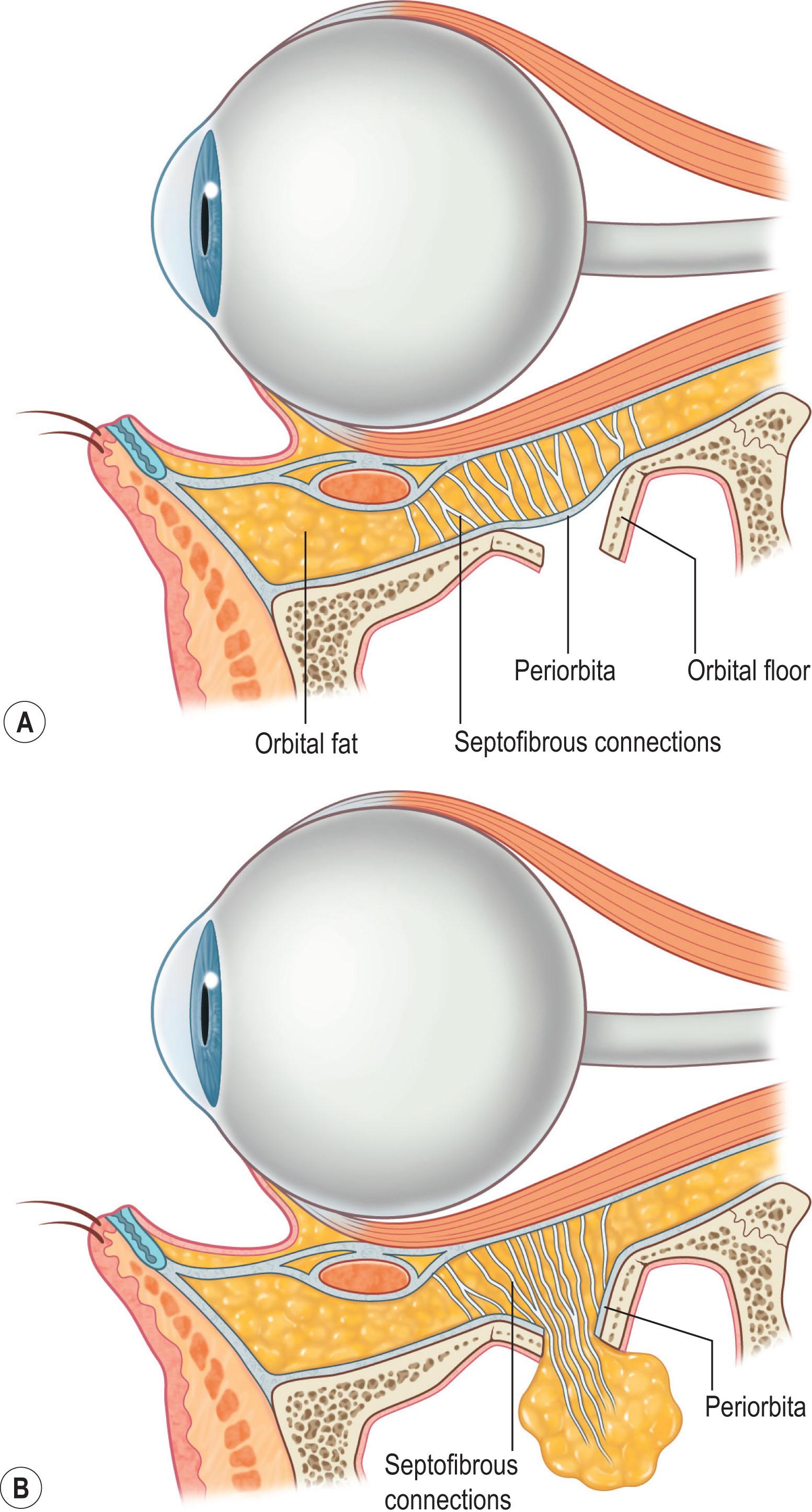
Isolated midface fractures are rare in children as this region is shielded by the prominent forehead and the mandible. Palatal splits are more common secondary to incomplete ossification of the hard palate suture. These injuries represent significant potential for growth disturbances secondary to the presence of growth centers in the maxilla and nasal capsule and because the midface is retruded relative to the cranium at this age. Incomplete zygomaticofrontal (ZF) suture union leads to fracture dislocations characterized by inferior displacement of the zygoma and orbital floor, further contributing to oblique fracture patterns. Oblique fracture patterns are also encouraged by the underdevelopment of the midface skeleton and major buttress systems. Until 10 years of age, the underdeveloped maxillary sinus transmits force to the alveolus, resulting in alveolar fractures instead of Le Fort I fractures. In the immature skeleton, Le Fort IIs are replaced by unilateral naso-orbito-ethmoid (NOE) fractures. Le Fort IIIs are replaced by multi-fragment oblique craniofacial fractures ( Figs. 22.6–22.8 ).
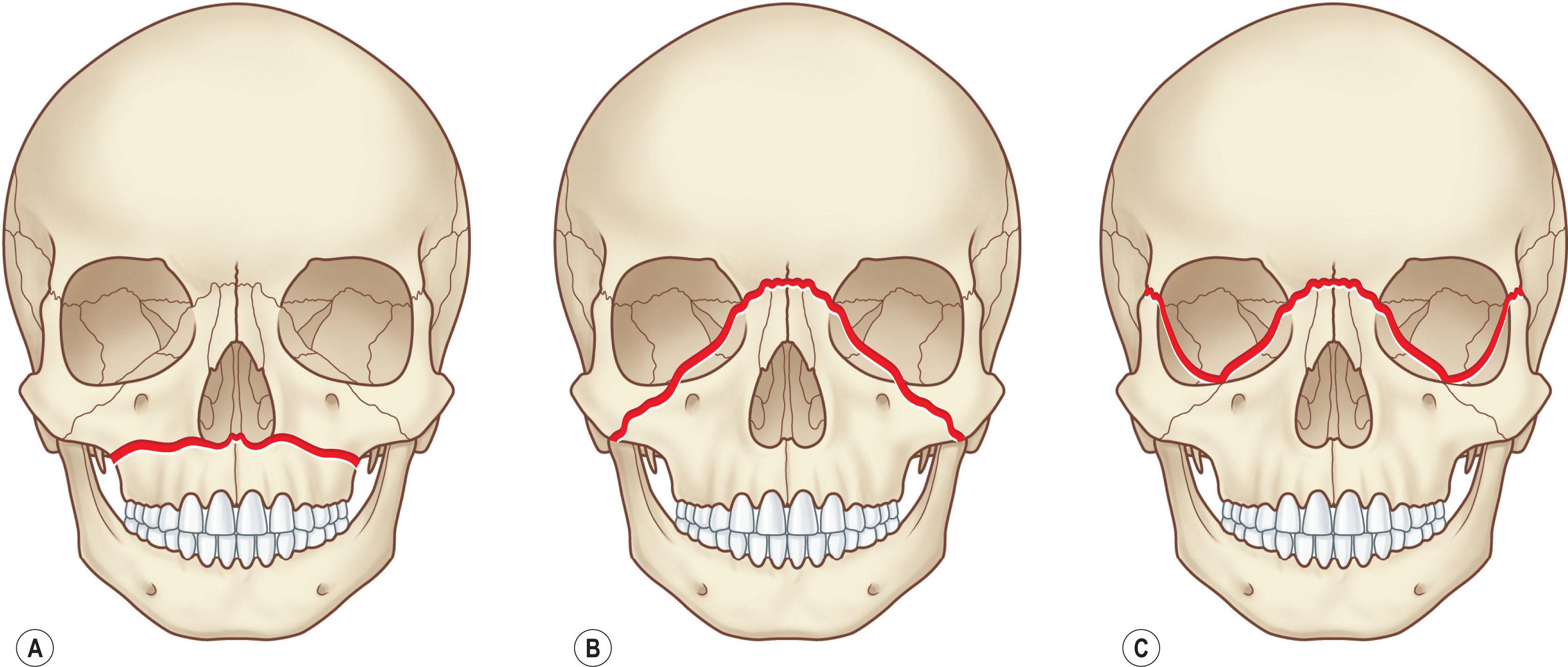
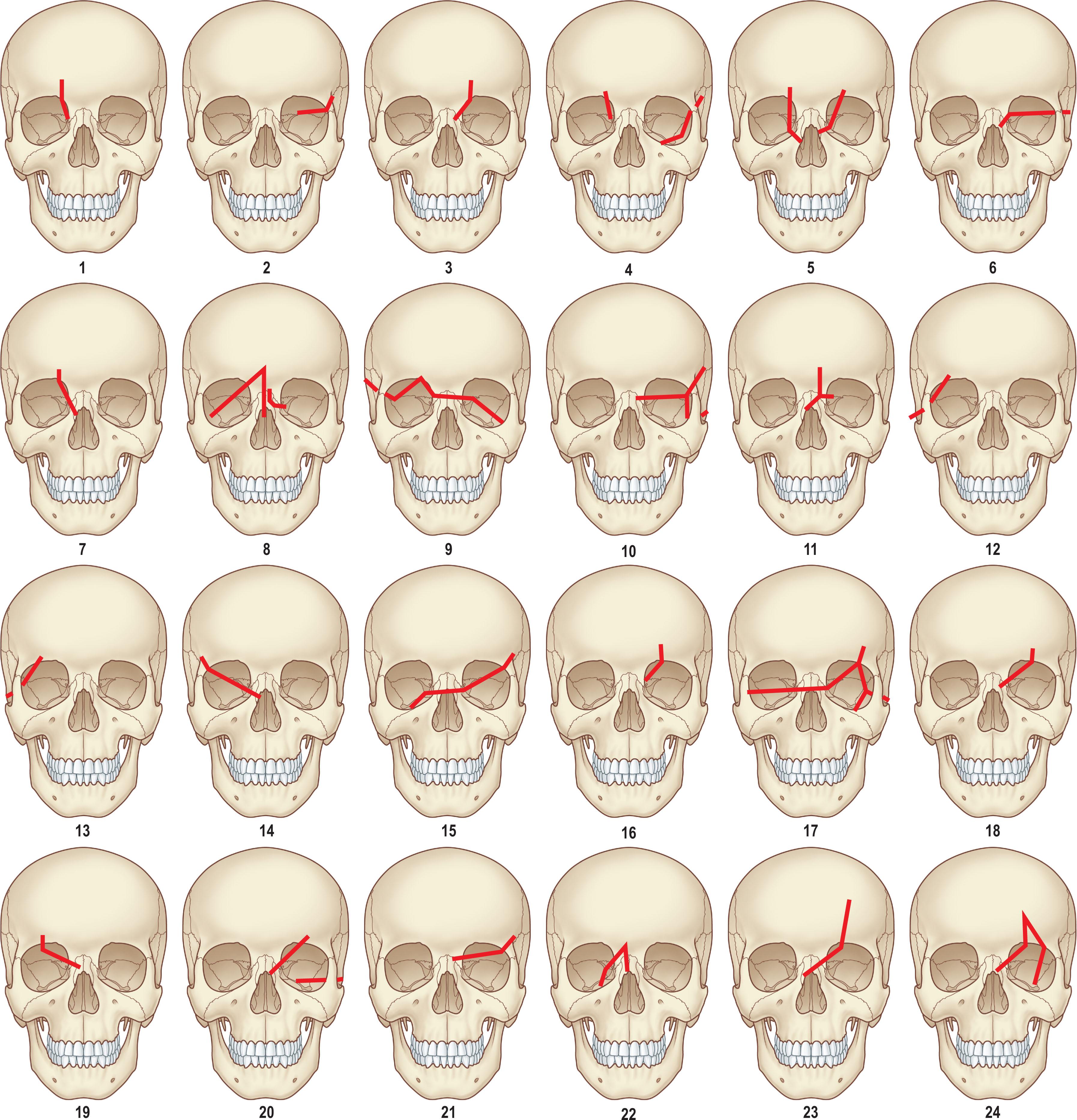
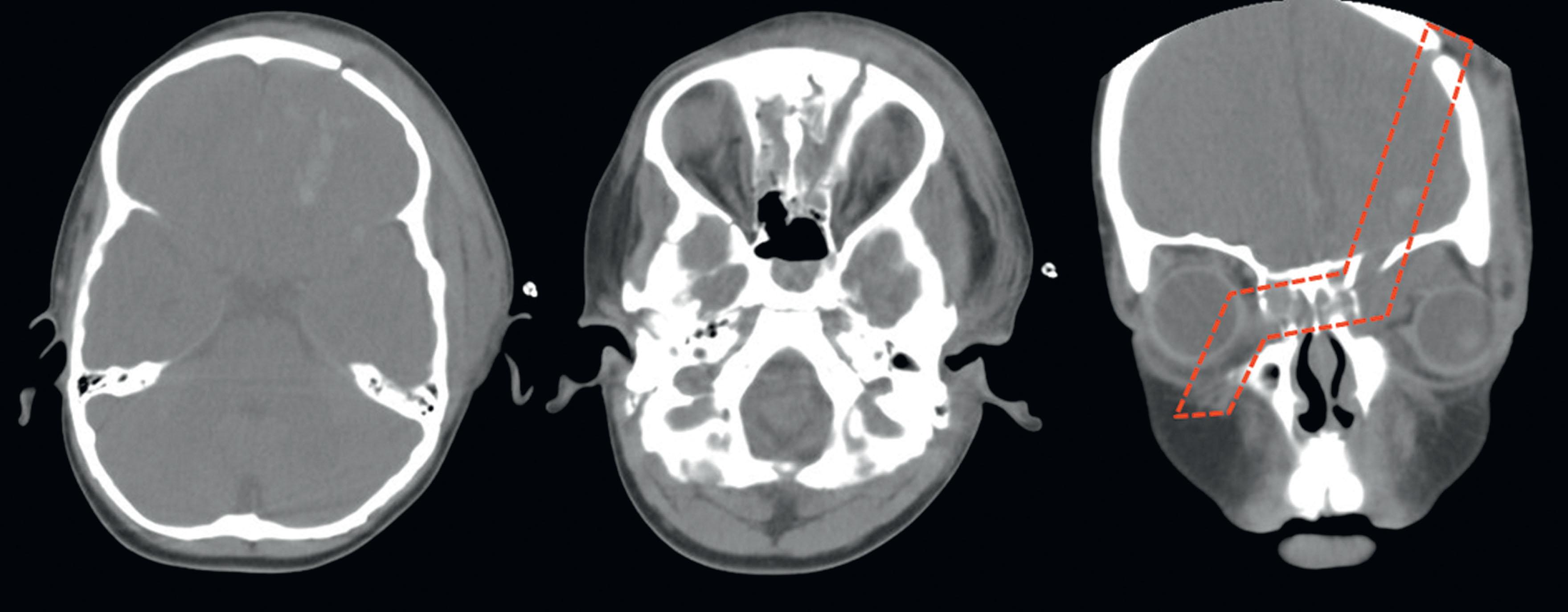
The less mineralized, more compliant pediatric mandible is more resistant to comminuted fractures. Condylar head and subcondylar fractures are seen more frequently in children due to incomplete ossification and a relatively weak condylar neck ( Figs. 22.9 & 22.10 ). While certain regions of the mandible are classically highlighted as growth centers (e.g., condyles and lingual tuberosity), condylectomy and differential masticatory strain studies point to a more diffuse, dynamic process by which morphological change proceeds via coordinated bone deposition and resorption. Heightened awareness of potential growth disturbance and temporomandibular joint (TMJ) ankylosis is, however, justified in the setting of condylar fractures given an incomplete understanding of these injuries’ implications.
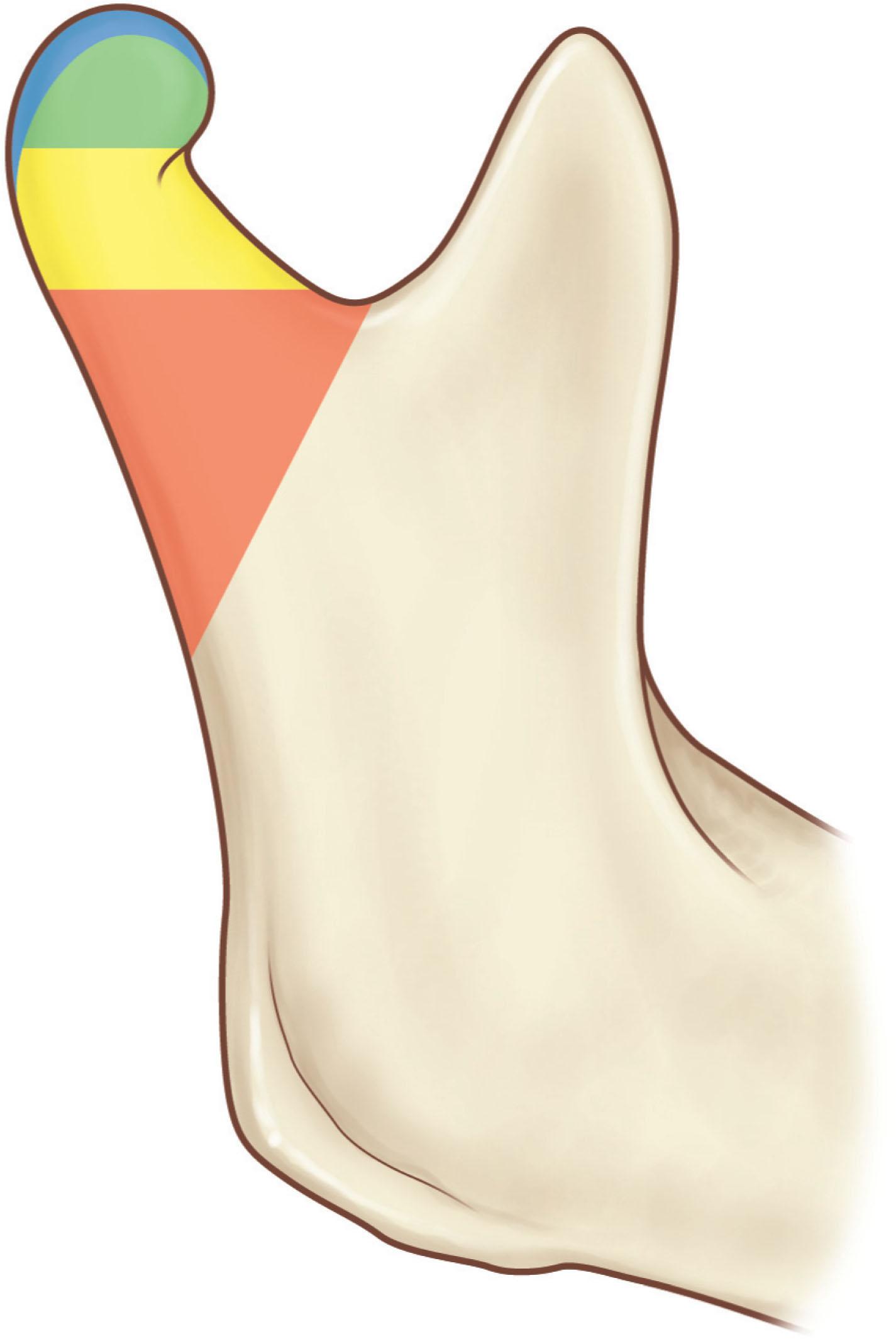

The importance of a consistent approach to evaluating the patient with craniofacial trauma cannot be overemphasized. The first step in treating acute craniofacial injuries is ensuring that the primary and secondary surveys have been completely addressed. The craniofacial surgeon’s most direct interaction with this process will likely be in assuring a secure airway in cases where anatomy has been severely distorted. Given the documented incidence of associated injuries, particularly neurological, and the usual inability to cooperate with a thorough physical exam, it is the authors’ opinion that pediatric patients with facial fractures benefit from routine CT scans of the skull, face, and mandible. Periocular injuries benefit from formal evaluation by the ophthalmology service.
Infants are obligate nasal breathers, and their nasal airway is relatively narrow and thus easily obstructed. Meticulous hemostasis must be achieved given a child’s relatively decreased blood volume and ability to mask significant losses with normotension prior to rapid decompensation. Hypothermia is also more likely to be problematic given a child’s increased surface area-to-volume ratio. A systematic physical exam is performed. Eyelid hematoma, hearing loss, hemotympanum, and cranial nerve (CN) palsy may herald skull base fractures. Exophthalmos and inferior globe displacement may represent a supraorbital or roof fracture. Ptosis may be present secondary to levator paralysis. Orbital trauma will likely be accompanied by periorbital ecchymosis and subconjunctival hematoma. Extraocular muscle restriction may cause diplopia ( Figs. 22.11 & 22.12 ). Forced duction is required to rule out muscle entrapment in obtunded patients. Superior orbital fissure syndrome (internal and external ophthalmoplegia [CN III, IV, VI paralysis], proptosis, and CN V paresthesia) and orbital apex syndrome (superior orbital fissure syndrome with blindness secondary to CN II involvement) must be emergently addressed ( Fig. 22.13 ). Gaze limitations – even if other clinical signs and symptoms are minimal and radiographic studies are equivocal – may represent entrapment in an entity termed the “white-eyed blowout fracture”. In naso-orbito-ethmoid fractures, a bowstring test (palpation of the bony medial canthal attachment on lateral distraction of the lower eyelid) will assess the integrity of the insertion of the medial canthal tendon. Interorbital distance is assessed to exclude traumatic telecanthus.

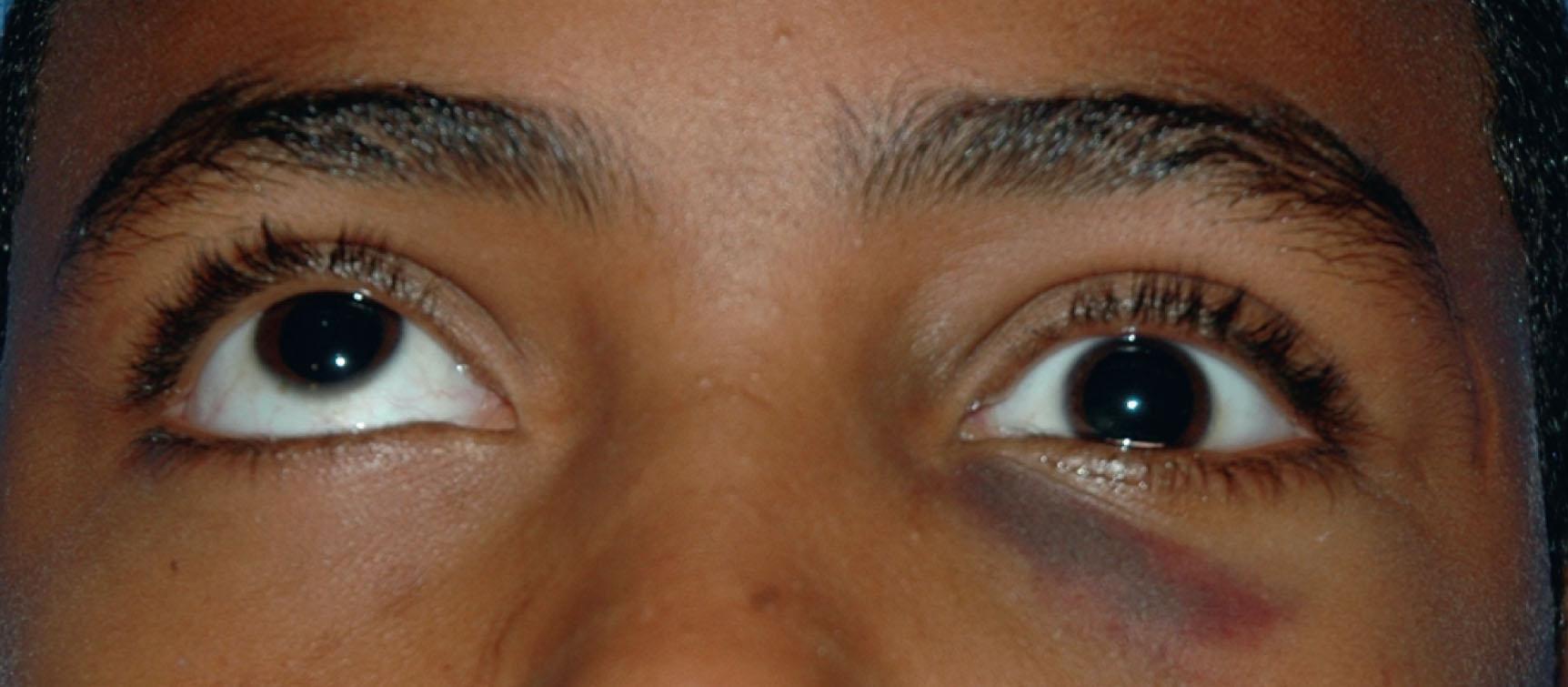
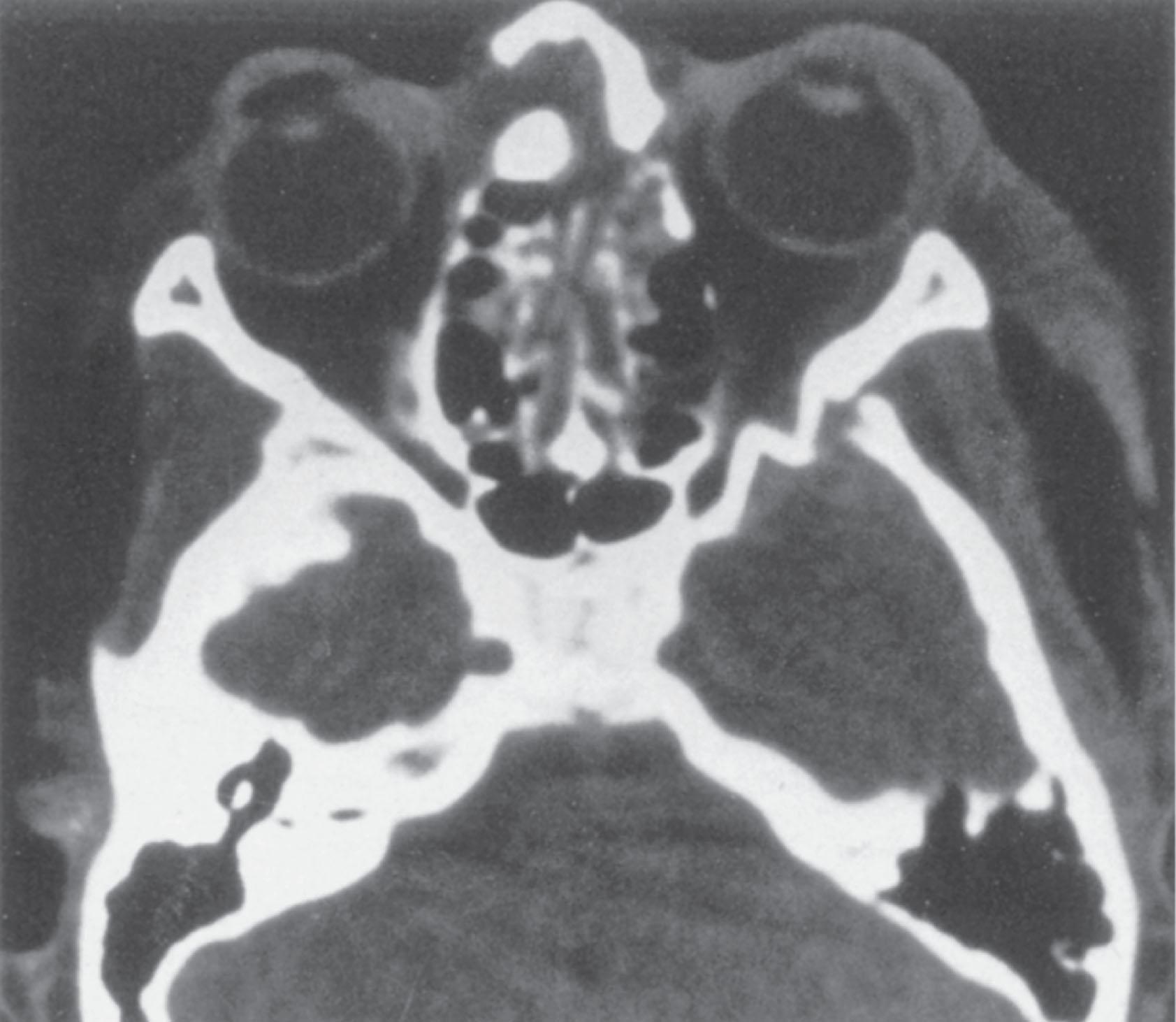
Maxillary mobility and malocclusion may represent midface fractures. ZMC fractures may be accompanied by upper buccal sulcus hematoma, epistaxis secondary to a fractured maxillary sinus, a pre-auricular depression, cheek flattening, or lateral canthal dystopia. Impingement of a depressed zygomatic arch on the coronoid process may yield trismus. Medial displacement of the lateral orbital wall, with subsequent decrease in orbital volume, may yield exophthalmos ( Fig. 22.14 ). Nasal deviation, compressibility of the nasal dorsum, and septal hematoma must be appreciated on exam. Nasal airway obstruction may result from septal hematoma.
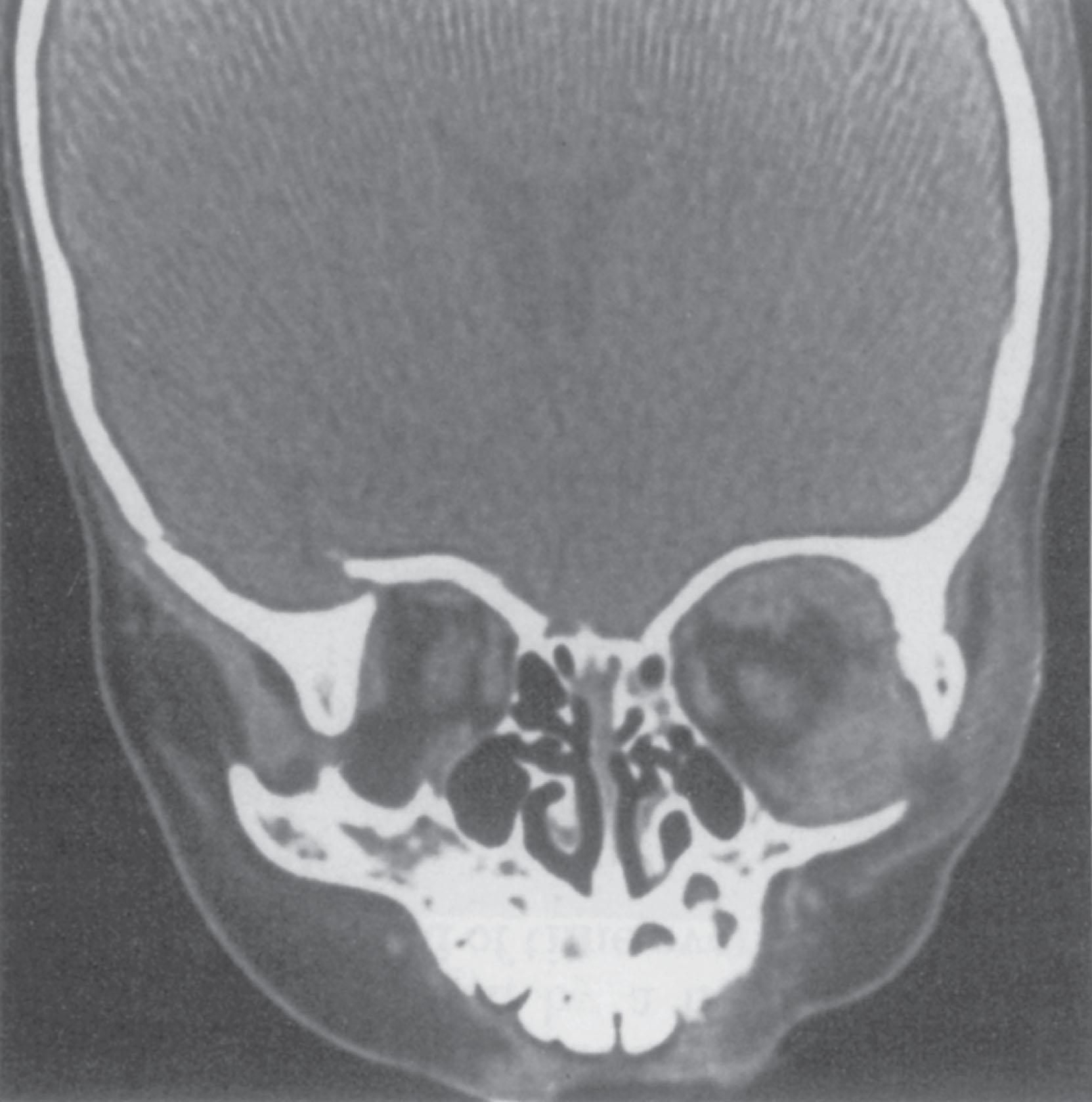
Signs and symptoms consistent with mandible fracture include malocclusion, drooling, trismus, decreased maximal incisive opening, discomfort on mandibular excursion against symphyseal pressure, and dental step-off. The TMJ can be evaluated by palpating the external auditory canal while ranging the jaw. Certain patterns of malocclusion are associated with specific fractures. Anterior open bite often results from bilateral condylar/subcondylar fractures, secondary to loss of posterior mandibular height and premature molar contact. Unilateral posterior condylar/subcondylar fracture may result in contralateral open bite. Mandible fractures must trigger suspicion for cervical spine fractures given the proximity and high-energy nature of these injuries.
Certain principles may be applied to the management of all pediatric craniofacial fractures. In deciding between operative and nonoperative management of pediatric facial fractures, the practitioner is essentially weighing the risk of growth disturbance against the benefit of precise reduction and rigid fixation. In the immature craniofacial skeleton with minimally displaced fractures, a conservative approach is logical. For the older child approaching skeletal maturity with significantly displaced fractures, treatment is similarly straightforward with open reduction and internal fixation (ORIF). However, these two scenarios represent “tails of the bell-shaped curve” with “black and white” decision-making. Most practitioners are faced with a very large “gray area” in between, representing the vast majority of pediatric facial fractures – specifically, the conundrum of what to do with the moderately displaced fracture in the immature craniofacial skeleton.
The younger the patient, the higher the threshold for operative intervention. If operative intervention is pursued, while it is critical to visualize fracture lines adequately, periosteal stripping should be minimized as, in accordance with Moss and Salentijn's “functional matrix” principle, stripping may adversely affect growth and development. Growth disturbances are felt by some to be minimized by using absorbable plating systems in skeletally immature patients. A 10-year retrospective review of 44 patients demonstrated resorbable plates and screws can be an effective fixation method for facial fractures in children in the primary and mixed dentition periods. They have demonstrated adequate rigidity and stability for the rapid healing of youth, and in applications ranging from the very low load-bearing upper and midface regions, to use as a bone-anchored method of mandibulomaxillary fixation (MMF) and for plate fixation of fractures of the tooth-bearing region of the mandible. The blunt tips of the screws and their eventual resorption theoretically offer decreased risk to developing teeth and nerve structures or ongoing facial growth and eliminate long-term foreign body retention. In one study, no delayed foreign-body reactions or inflammation was seen with the resorbable polymers used.
For mandible fractures, the authors have championed the safe and efficacious use of arch bars in patients during primary and mixed dentition as a challenge to conventional teaching. A cohort of 23 pediatric patients in primary and mixed dentition with mandible fractures were successfully treated with the aid of arch bars. There were no periodontal defects, tooth avulsions, or disturbances to permanent dentition noted with regard to arch bar use.
While some surgeons favor delaying intervention of facial fractures in adults until swelling resolves, others note the pediatric craniofacial skeleton’s enhanced healing: loose fragments may adhere within 3–4 days of injury. Converse advocated prompt repair in the 1960s. The authors maintain that if the decision is made to operate, this should be done early so long as the degree of swelling is not prohibitive.
Outcomes and complications in pediatric facial fractures are understudied. A broad range of complication rates in the literature (2.6%–21.6%) implies vague documentation of these injuries. Photographic, radiographic, and functional documentation over time is essential in developing literature to inform our ongoing treatment of these potentially life-altering injuries. Meaningful outcomes analysis in this field is dependent on improved standardization of data collection. To this end, the authors have introduced a classification system to facilitate the clear characterization and discussion of adverse outcomes in these injuries. Type 1 adverse outcomes are intrinsic to the fracture itself (i.e., blindness following orbital fracture, tooth loss following mandibular fracture). Type 2 adverse outcomes are directly secondary to surgical management (i.e., ectropion following subciliary incision, enophthalmos following orbital fracture repair). Type 3 adverse outcomes are those that could be attributed to the fracture itself, its treatment, and/or the subsequent altered growth and development – such as the development of a class II malocclusion many years following mandibular fracture and its treatment ( Table 22.1 ). In this type 3 adverse outcome example, the class II malocclusion could be the result of the mandibular fracture, its treatment with ORIF, or an inherent growth issue that would have resulted in such a malocclusion regardless of sustaining a fracture.
| Classification | Definition | Example |
|---|---|---|
| Type 1 | Intrinsic to fracture | Loss of permanent tooth with mandible fracture |
| Type 2 | Secondary to intervention | Marginal mandibular nerve injury during open reduction, internal fixation of mandibular fracture |
| Type 3 | Subsequent to growth and development | Asymmetric mandibular growth after condylar fracture |
Infection, non-union, and malunion are rare in children, in comparison to adults, secondary to increased osteogenic potential, less frequent indications for open reduction, and a lower frequency of severely displaced fractures in children. Metallic cranial hardware may pose a direct hazard to growing children when used in the craniofacial skeleton, as it may translocate intracranially, secondary to ectocranial bone deposition and endocranial bone resorption ( Figs. 22.15 & 22.16 ).
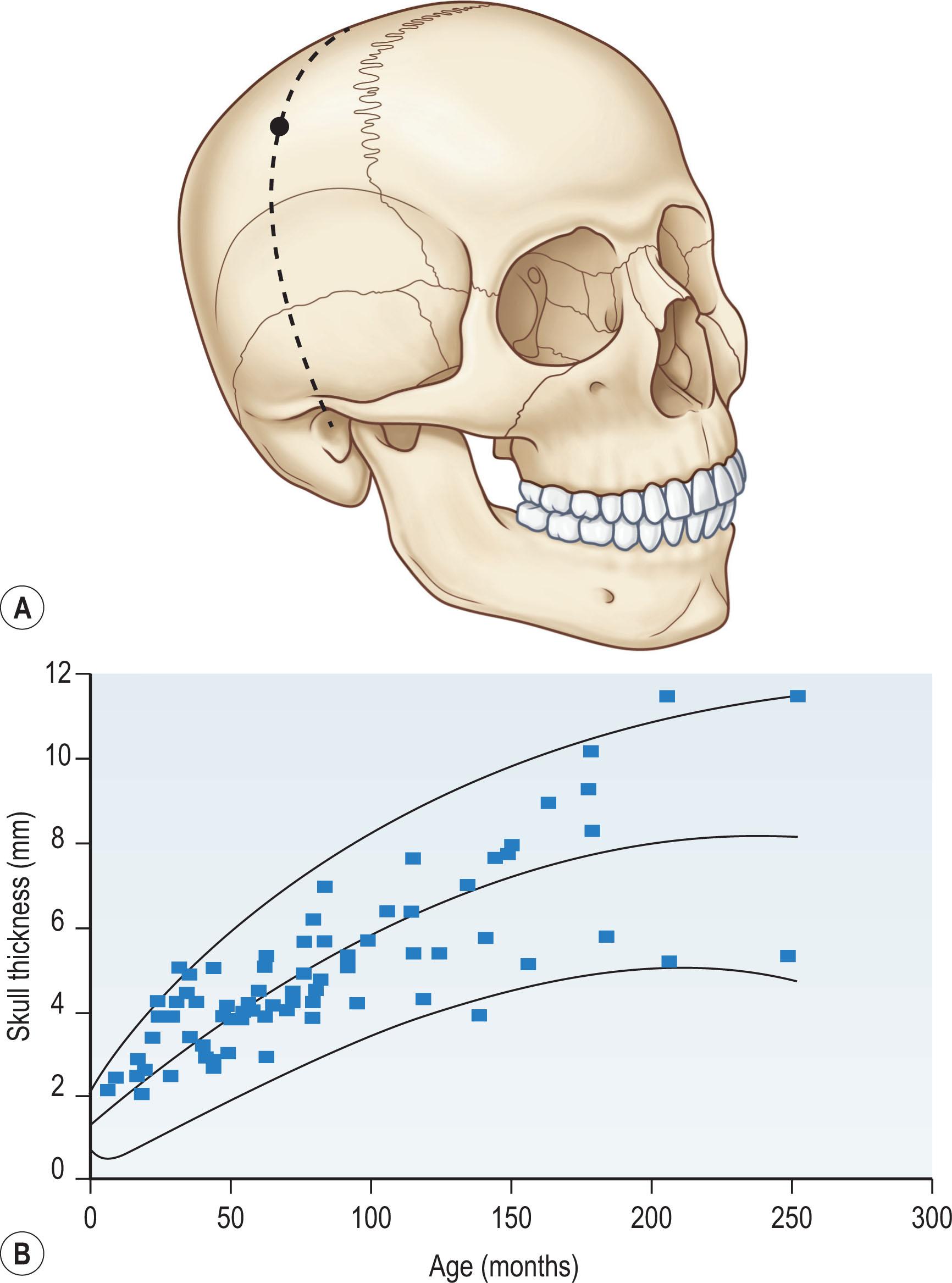
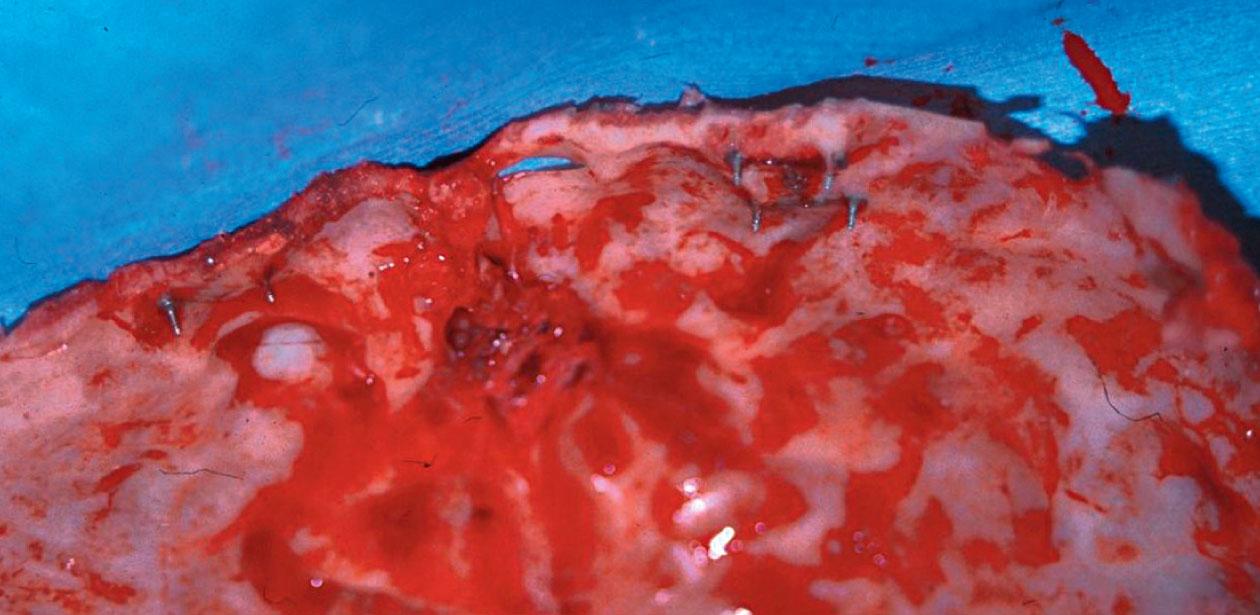
Growth disturbance secondary to facial trauma is an incompletely understood phenomenon. Furthermore, establishing attribution: whether the initial trauma, the subsequent management, or contributions from both – affecting subsequent facial growth and development – remains equally uncertain. Mustoe et al . concluded that closed reduction of nasal fractures is not deleterious for growth. Invasive rhinoplasty is similarly benign according to Ortiz-Monasterio and Olmedo. Other authors express significant concern for subsequent growth effects. Complete resection of the septum, as in hypertelorism correction, is well documented to have devastating effects on the growth and development of the midface. Severe bony and cartilaginous central facial injury has been suggested to result in growth and developmental anomalies in up to 40% of patients. However, this does not represent an undisputed consensus in the literature. Schliephake et al . examined 12 patients who had suffered midface fractures during their childhood, and no correlation was found between the age, the severity of injuries, surgical treatment, and resulting deformities.
The contribution of hardware to growth retardation is not clear. Laurenzo et al . examined the effects of soft-tissue manipulation, rigid microplate fixation, and multiple osteotomies on the growing midface in rabbits. Disturbances in craniofacial growth were produced by rigid plate fixation as well as de novo by trauma, independent of fixation. Other groups, however, have demonstrated regional bone growth compensation that may overcome local growth restriction in response to craniomaxillofacial bone planting in infant rabbits, such that there is no long-term impairment. Berryhill et al . reported 6 of 96 children with facial fractures undergoing ORIF to have experienced delayed or restricted growth. As they state, however, it is impossible to separate the developmental effects of fixation from other intrinsic and extrinsic factors. At an average of 3 years after treatment, the authors’ cohort of mandible fractures did not demonstrate growth disturbances. In severe midface trauma, however, the authors have described clinically significant impairment in growth in up to 86% of cases.
Imola et al . provide a useful overview of secondary procedures that may be required in managing craniofacial fractures. Soft-tissue deformity and the evolution of a scarred soft-tissue envelope are the single greatest barriers to optimal outcomes. Poorly reduced fractures may require osteotomy and repeat ORIF. Traumatic telecanthus may require transnasal fixation; if the medial canthus must be reinserted, it is essential to ensure sufficiently superior and posterior positioning. Dorsal nasal deficiency may exacerbate the appearance of telecanthus, and this may also be surgically addressed. Mandibular growth disturbances may necessitate advancement genioplasty or distraction. Secondary correction of enophthalmos requires anterior globe repositioning, reduction of the orbital contents, and/or osteotomy and repositioning of skeletal components. VOD may require four-wall osteotomies for optimal results. Diplopia may occur secondary to extraocular muscle dysfunction and/or globe malposition; the inferior rectus and superior oblique are the muscles most commonly involved. Growing skull fractures require dural repair and cranioplasty. Hardware removal may be indicated to minimize growth disturbances, to avoid risks associated with transcranial migration, or if the hardware is causing discomfort or aesthetic concern. Initial conservative approaches to nasal trauma is often practiced to mitigate iatrogenic impact on growth, albeit in the knowledge that definitive septorhinoplasty will likely be required to restore form at skeletal maturity.
Become a Clinical Tree membership for Full access and enjoy Unlimited articles
If you are a member. Log in here